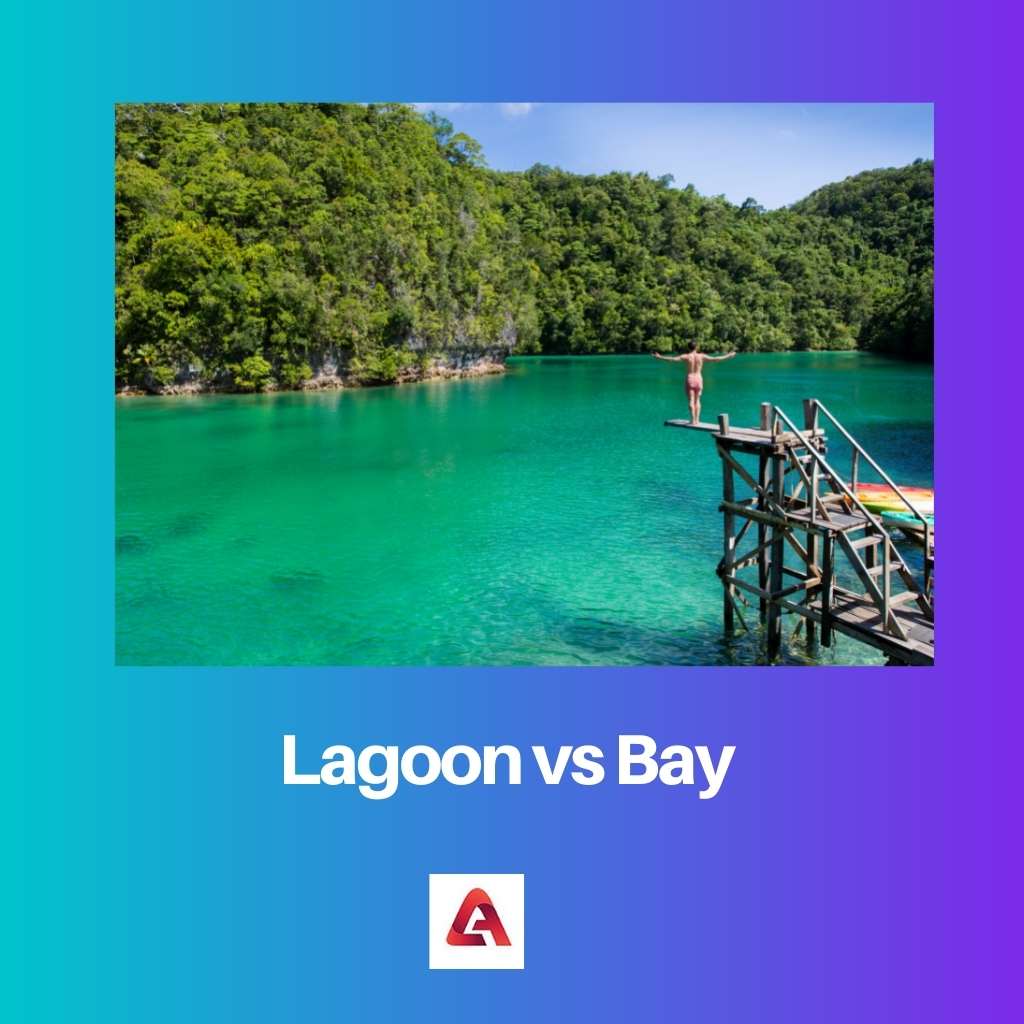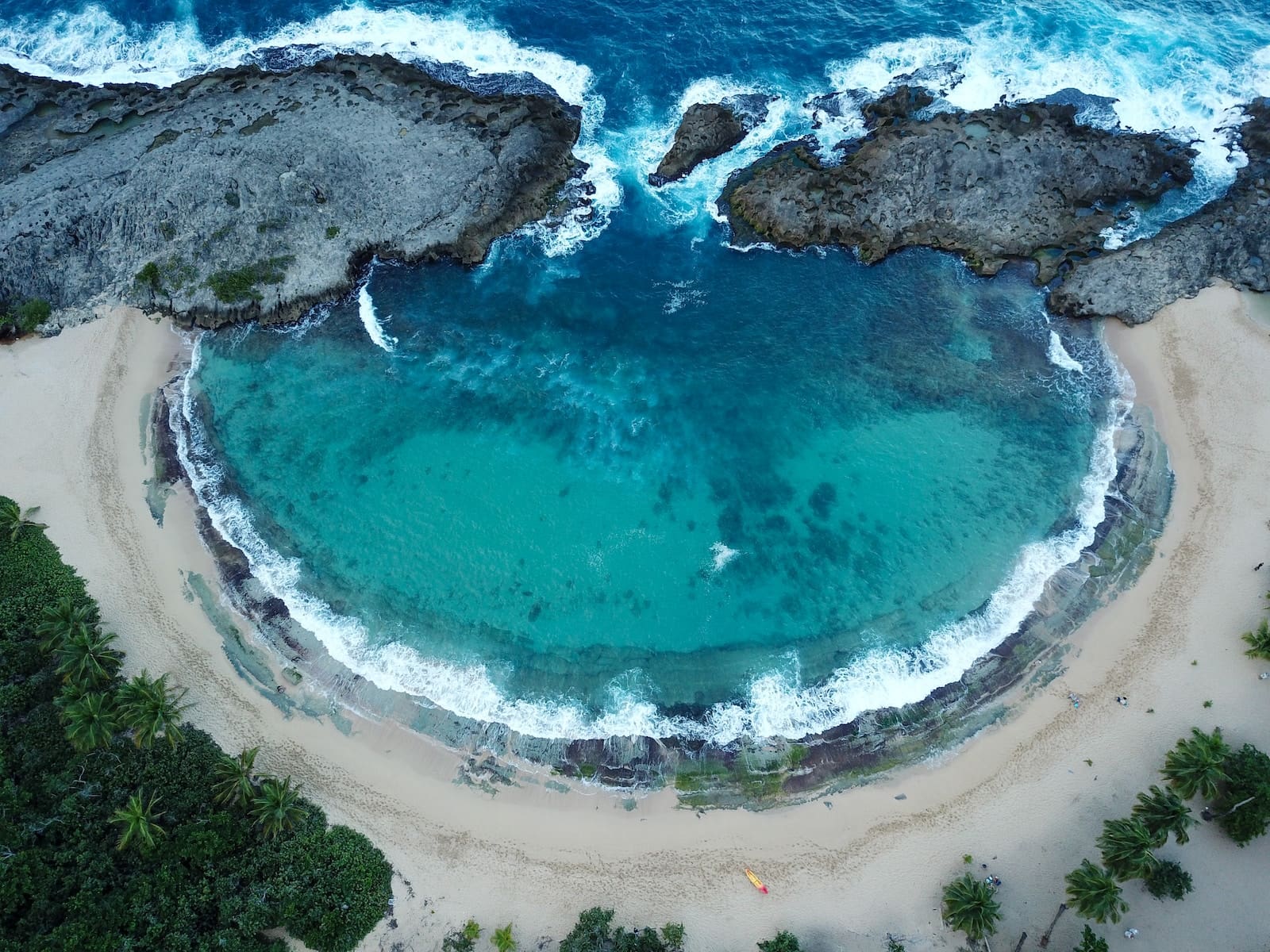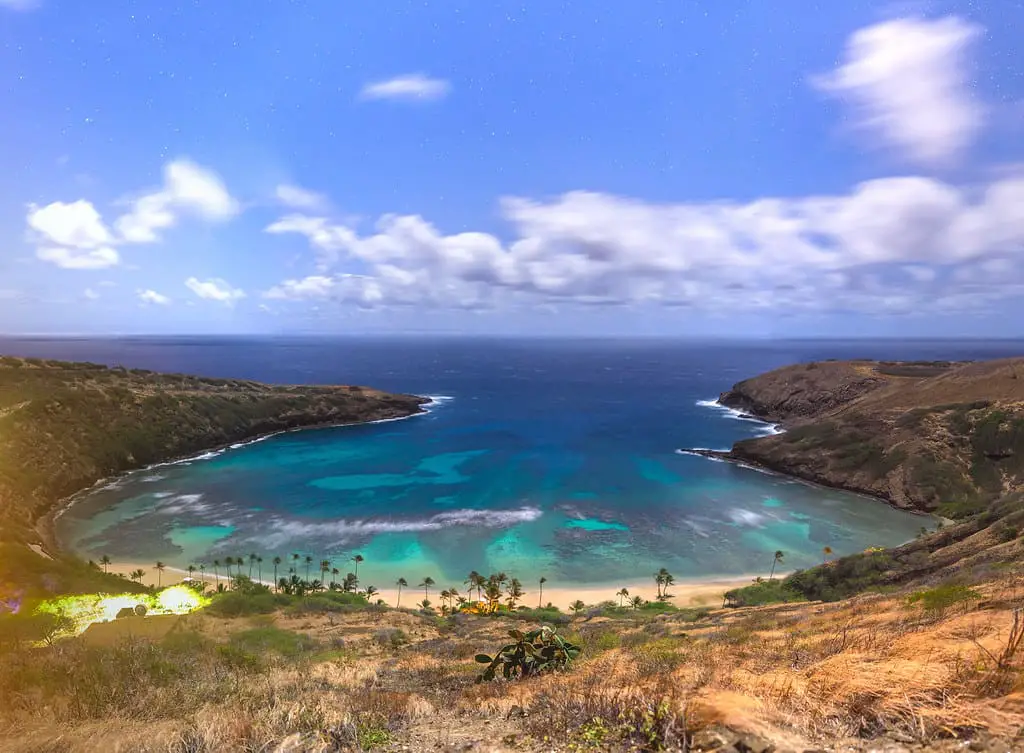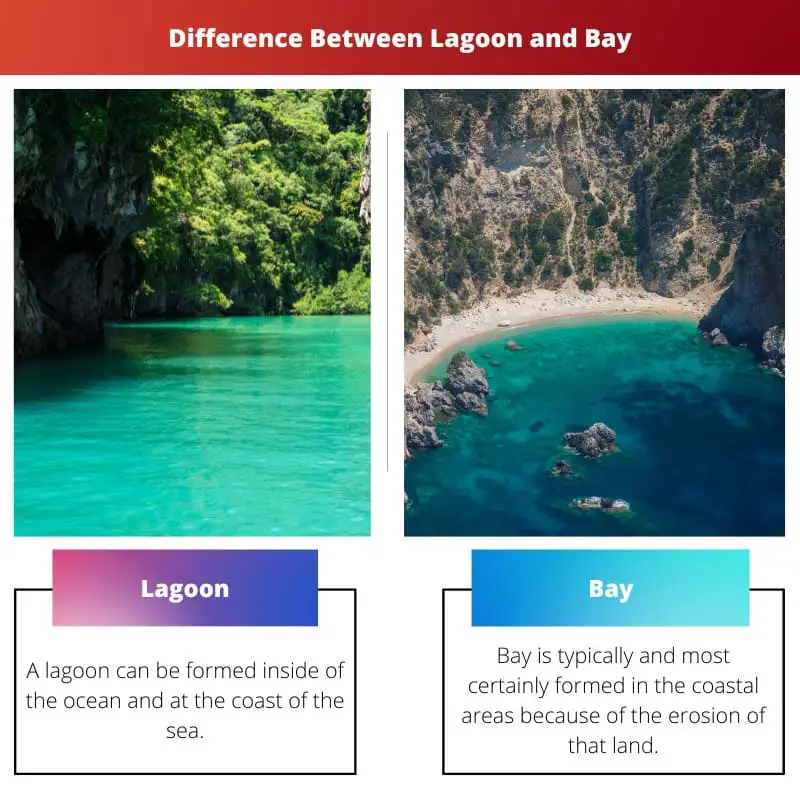The earth is mainly divided into two parts: land and water and both parts have beautiful geographical formations. These formations can be beneficial to set up human civilization by providing particular natural resources.
Similarly, lagoons and bays are two land formations associated with coastal areas and large water bodies that can facilitate people in many ways.
Key Takeaways
- Lagoons are shallow bodies of water separated from larger bodies by natural barriers.
- Bays are coastal indentations with wider openings and connections to larger bodies of water.
- Lagoons are more sheltered than bays, providing unique habitats for marine life.
Lagoon vs Bay
A lagoon is a shallow body of water that is separated from the sea by a narrow strip of land, such as a sandbar, coral reef, or barrier island. Lagoons are protected from strong waves and currents. A bay is a large body of water that is partially enclosed by land but is larger and deeper than a lagoon. Bays can be found along coastlines.

The lagoon is a unique landform that looks like a small pond. Lagoons are separated by tapered land from larger rivers or oceans. The land that separates them is known as a natural barrier.
Lagoons are also known as marine, brackish, hypersaline, etc. They are divided into two divisions that are atoll lagoons and coastal lagoons.
The bay is formed at the coastal areas where the land curves in a particular way. It is considered to be an inlet of water through the curvy land.
Every side of the bay is surrounded by land leaving an entry for water to come in known as the mouth of the bay.
Comparison Table
| Parameters Of Comparison | Lagoon | Bay |
|---|---|---|
| Formation | Various types of changes in shoreline and different types of natural factors are responsible for the formation of the lagoon. | There are various reasons for the formation of a bay and the most common type is the erosion of coastal areas. |
| Things found in | Different types of water are found in lagoons, for example, freshwater, salty water, brackish water, swampy water, etc. | When looking through the bay, different types of sea creatures and their habitat can be found inside of it. |
| Areas of formation | A lagoon can be formed inside of the ocean and at the coast of the sea. | Bay is and most certainly formed in the coastal areas because of the erosion of that land. |
| Mouth | A lagoon can have a mouth but it is not necessary because atoll lagoons are completely circular. | A bay is a landform that lies within the curvy land and most certainly needs a mouth for water to inlet. |
| Size | Lagoons are irregular and unshaped but they are not spanned in a wider area. | A bay is a large formation that can be utilized for sea trading and is larger than lagoons. |
What is Lagoon?
When the small body of water gets separated from big and larger water bodies, they form a landform known as the lagoon. Lagoon contains salty water.
Sometimes other landforms that are barrier islands and peninsulas, reefs, isthmuses become liable to form lagoons.
Lagoons can be seen in every part of the world and are associated with coastal areas. The term ‘freshwater body’ is sometimes included in the definition of lagoons.
In Latin America, the word Laguna is used for lagoons. There can be several seagrasses within lagoons are Manatee grass, Paddle grass, Widgeon grass, Shoal grass, Johnson’s seagrass, Turtle grass, Star grass, etc.
The more lagoons are near the tidal inlets, the saltier it gets. Lagoons are divided into two divisions: atoll and coastal. Atoll lagoons are considered to be formed when water drowns the whole Island leaving a landform that looks like a coral ring.
The water in the center of this ring can be very deep.
The formation of atoll lagoons is very complex and can take up to 300,000 years to be complete. On the other hand, coastal areas that are gently sloping cause coastal lagoons to be formed. Coastal lagoons are quite narrower than atoll lagoons.

What is Bay?
A small property of water that is separated by curvy land from big bodies of water is known as a bay. They are one of the most beautiful types of geological formations.
A bay is smaller than a gulf but larger than a lagoon. A bay is also known as bights, cove, and sounds. The cove is the smallest form of a bay.
Since it is surrounded by land, the strongest winds become weak in its area and a bay can also block the heavy waves of the sea. A bay can have both shoreline and a beach.
Bays have been a significant part of human civilization whenever it comes to ‘human settlement’ because bays offer an excellent and convenient place for fishing.
Also, their importance in sea trade can not be unseen.
The world’s largest bay lies in the Asia continent known as the Bay of Bengal while Hudson Bay has been claimed to be the world’s second-largest bay. In the United States, San Francisco bay is a famous example of a bay.
There are countless bays in the world and some of them are the Bay of Pigs, Chesapeake Bay, Hudson Bay. Bays are formed when the plates of the earth move around or sometimes because of earthquakes.

Main Differences Between Lagoon and Bay
- A bay has an adequate opening from where water flows in while a lagoon does not necessarily have an opening; they can sometimes be surrounded by land from every direction.
- There is an apparent connection between the bay and ocean while lagoons can be completely separated from the big bodies of water.
- The bay does not have different types but has only one definition whereas lagoons have been divided into two parts that are atoll and coastal lagoons.
- Bays are larger in the area if compared to lagoons. A bay can receive ships and vessels while lagoons are not much wider.
- A bay consists of sea creatures and their habitats. On the other hand, a lagoon contains different types of seagrasses and water.

- https://www.sciencedirect.com/science/article/pii/S0422989408700060
- https://books.google.com/books?hl=en&lr=&id=8eWwAAAAQBAJ&oi=fnd&pg=PP8&dq=bay+bengal&ots=f9aYudk4Gw&sig=AS_irnBR6YucJYeaIwXOGo0moO0

I find the article quite interesting and engaging. It broadened my knowledge regarding lagoons and bays.
This article is very informative and comprehensive, explaining in details the similarities and differences between lagoons and bays. The level of detail provided here is excellent.
I couldn’t agree more. This is a great article that provides a thorough understanding of lagoons and bays.
True, the content is well researched and presented in such an engaging manner.
This article fails to provide a comprehensive analysis of the topic. It lacks depth and fails to capture the nuances of lagoons and bays.
I strongly disagree. The article offers an extensive and detailed explanation of lagoons and bays.
I totally disagree. The article is well-researched and provides valuable insights into lagoons and bays.
This article provides an excellent analysis of lagoons and bays, with clear and concise descriptions of both.
I appreciate the in-depth coverage of lagoons and bays in this article. It has broadened my understanding of these geographical formations.
The content is thorough and detailed, making it an excellent resource for anyone interested in lagoons and bays.